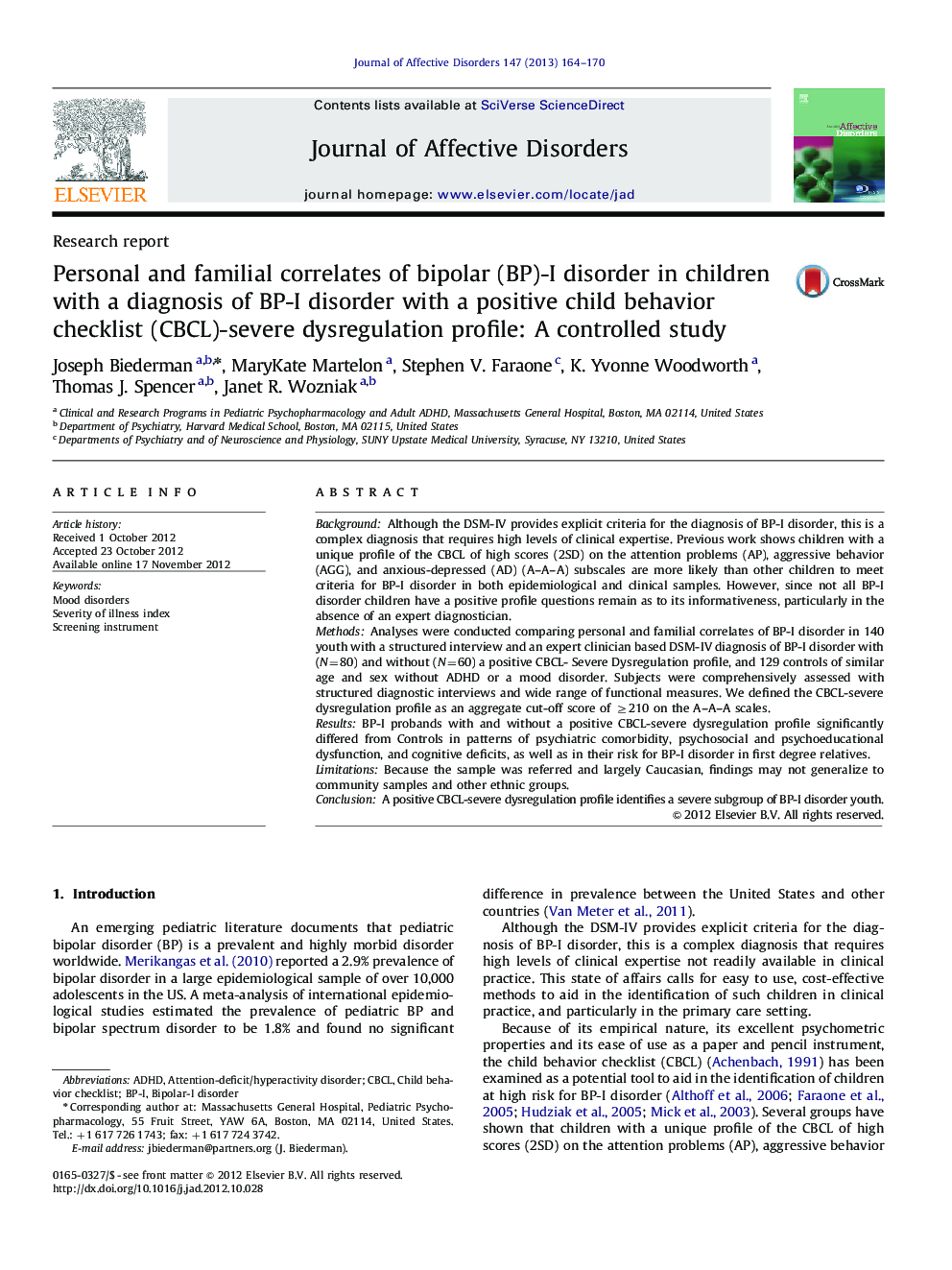| Article ID | Journal | Published Year | Pages | File Type |
|---|---|---|---|---|
| 6234757 | Journal of Affective Disorders | 2013 | 7 Pages |
BackgroundAlthough the DSM-IV provides explicit criteria for the diagnosis of BP-I disorder, this is a complex diagnosis that requires high levels of clinical expertise. Previous work shows children with a unique profile of the CBCL of high scores (2SD) on the attention problems (AP), aggressive behavior (AGG), and anxious-depressed (AD) (A-A-A) subscales are more likely than other children to meet criteria for BP-I disorder in both epidemiological and clinical samples. However, since not all BP-I disorder children have a positive profile questions remain as to its informativeness, particularly in the absence of an expert diagnostician.MethodsAnalyses were conducted comparing personal and familial correlates of BP-I disorder in 140 youth with a structured interview and an expert clinician based DSM-IV diagnosis of BP-I disorder with (N=80) and without (N=60) a positive CBCL- Severe Dysregulation profile, and 129 controls of similar age and sex without ADHD or a mood disorder. Subjects were comprehensively assessed with structured diagnostic interviews and wide range of functional measures. We defined the CBCL-severe dysregulation profile as an aggregate cut-off score of â¥210 on the A-A-A scales.ResultsBP-I probands with and without a positive CBCL-severe dysregulation profile significantly differed from Controls in patterns of psychiatric comorbidity, psychosocial and psychoeducational dysfunction, and cognitive deficits, as well as in their risk for BP-I disorder in first degree relatives.LimitationsBecause the sample was referred and largely Caucasian, findings may not generalize to community samples and other ethnic groups.ConclusionA positive CBCL-severe dysregulation profile identifies a severe subgroup of BP-I disorder youth.
